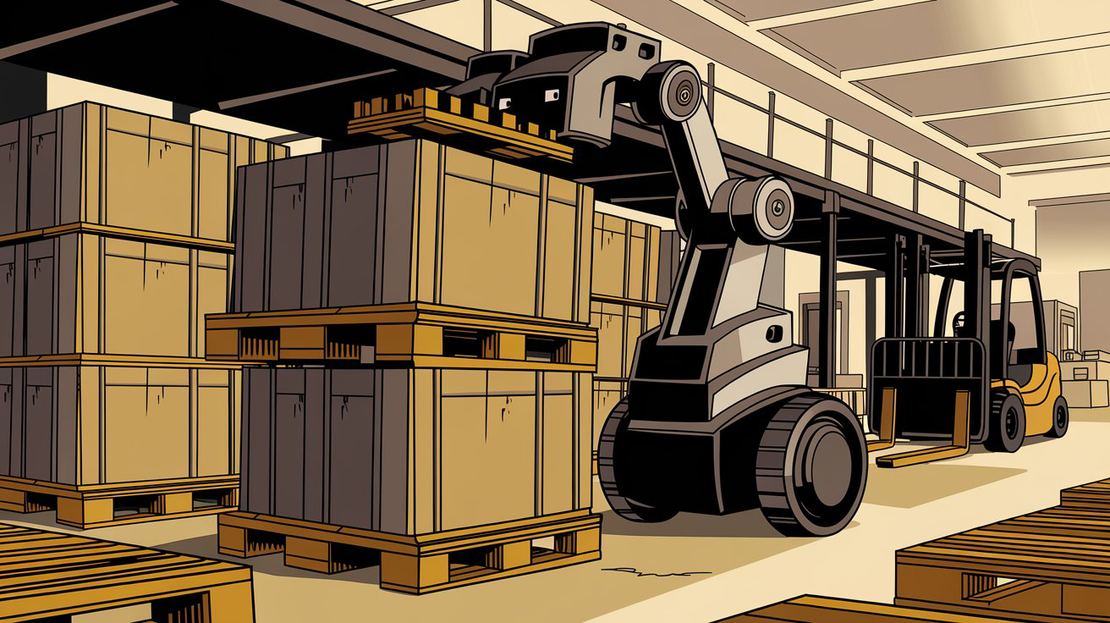
Maximizing Efficiency: WMS - Independent or Integrated?
- Michal Majer
- It , Architecture
- December 3, 2024
Table of Contents
In the evolving landscape of eCommerce, the choice between a standalone warehouse management system (WMS) and an integrated ERP solution is critical. This article delves into the key differences between these two options, discussing the benefits and drawbacks of each. You’ll learn how an independent WMS can offer specialized functionality and flexibility, while an ERP-integrated WMS provides seamless data flow across business processes. Understand critical factors like scalability and cost-effectiveness to help you decide which solution aligns best with your operational goals.
The Crucial Choice of Warehouse Management Systems in eCommerce
In the fast-paced world of eCommerce, picking the right Warehouse Management System (WMS) can really boost your operational efficiency.
A solid WMS makes processes smoother, cuts down on errors, and helps manage inventory better, leading to quicker order fulfillment and happier customers.
For example, companies that use a top-notch WMS often see their order processing times drop significantly—by 30% or even more.
With features designed for complex warehouse operations, such as:
- Real-time tracking
- Automated replenishment
- Advanced analytics
businesses can quickly adapt to market changes and meet customer needs. This kind of flexibility is vital for staying competitive, especially during seasonal changes or sudden spikes in demand.
Understanding Standalone Warehouse Management Systems
A standalone Warehouse Management System (WMS) is designed specifically for high-volume operations, distinguishing itself from traditional ERP systems that often miss the mark with specialized features.
These advanced capabilities include:
- Real-time inventory tracking
- Automated order processing
These features help businesses streamline workflows and boost accuracy, which is vital for keeping up with the demands of a growing eCommerce landscape.
Additionally, the flexibility of a standalone WMS allows for custom solutions tailored to a warehouse’s unique needs. This could involve integrating with existing software or adapting to specific inventory types, making it easier to maintain operational control without breaking the bank.
For example, a retailer might adopt a specialized picking system that aligns with their unique product lines, leading to better resource utilization and improved fulfillment rates. Ultimately, investing in a standalone WMS can unlock significant efficiencies, paving the way for sustainable growth in a competitive market.
Exploring ERP-Integrated WMS: Benefits of Seamless Data Flow and Unified Business Processes
Integrating an ERP with a Warehouse Management System (WMS) offers a host of benefits that can revolutionize your operations.
By connecting these systems, businesses can cut order processing times by up to 30%, leading to a significant boost in efficiency.
This increase in speed translates to faster shipping times, helping you meet and even exceed customer expectations, especially during busy shopping seasons.
Additionally, a unified data flow reduces errors by 20%, which enhances inventory accuracy and drives higher customer satisfaction.
With real-time data sharing, you can quickly resolve discrepancies between stock levels and actual inventory, ensuring that what customers see online matches what’s truly available.
For example, a retailer that linked their ERP with a WMS might experience a noticeable drop in stockouts and overstock situations, providing a more dependable shopping experience for customers.
This smooth coordination not only streamlines operations but also improves decision-making, allowing executives to react swiftly to market changes and operational challenges.
In today’s world, where precision and speed are crucial, this integration is key to achieving lasting success.
Evaluating Scalability and Cost-Effectiveness of WMS Solutions
When looking at WMS solutions, it’s important to think about their scalability and cost-effectiveness.
Standalone WMS solutions excel in complex operations, easily adapting to growth while maintaining strong performance.
For example, a high-volume retailer can:
- Expand warehouse space
- Increase inventory handling capabilities
- Meet customer demand consistently
On the flip side, ERP-integrated WMS options offer a more budget-friendly initial investment.
They reduce the need for extensive software interfaces, which boosts cost-effectiveness. This allows businesses to use their resources more wisely.
For instance, a company might save thousands on software integration costs, enabling them to invest in:
- Marketing
- Inventory expansion
This, in turn, drives further growth.
Ultimately, the right choice comes down to balancing short-term financial considerations with long-term operational needs, ensuring scalability and efficiency align with your strategic goals.
Making the Decision: Key Considerations for WMS Selection
Choosing the right Warehouse Management System (WMS) isn’t just about features; it’s about finding the right fit for your operational goals.
Maximizing efficiency means understanding how a WMS can meet your specific needs. For example, if you prioritize rapid order fulfillment, opting for a WMS that focuses on speed and accuracy can greatly improve your workflow.
A best-of-breed WMS offers seamless integration with your existing systems, which helps avoid extensive customization. This not only simplifies the implementation process but also lowers the risk of costly errors from complex adjustments.
For instance, a retailer might discover that connecting their WMS with an inventory management tool allows for:
- Real-time updates
- Fewer discrepancies
- Improved stock accuracy
In today’s fast-paced eCommerce world, making a smart choice in WMS selection can drive sustainable growth and give you a competitive edge.
Summary
In the dynamic eCommerce landscape, selecting the optimal Warehouse Management System (WMS) is pivotal for enhancing operational efficiency and customer satisfaction. The choice between an independent WMS and an ERP-integrated solution hinges on specific business needs. Standalone WMS options excel in complex, high-volume operations, offering tailored features like real-time tracking and automated order processing that significantly reduce processing times and errors. Conversely, ERP-integrated WMS can provide a cost-effective initial investment while ensuring smoother data flow and better inventory accuracy.
As businesses consider their options, it’s crucial to reflect on scalability, cost-effectiveness, and the long-term alignment of the chosen system with strategic goals. How well does your current system support rapid order fulfillment and adaptability to market shifts? Ultimately, the right WMS can not only streamline operations but also empower businesses to thrive in an increasingly competitive market, fostering sustainable growth and operational excellence.
Sources used in the article
- https://www.explorewms.com/best-of-breed-wms-benefits.html
- https://maveneer.com/blog/types-of-warehouse-management-systems


